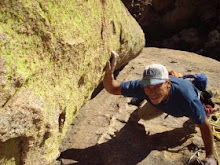Human Powered Soaring Glider
Most people considering HPA’s (human powered airplanes), really want a human-powered take-off assist to a good glider that can soar. Years ago a first reaction to this was to think that changing the wing area could do this, and then I forgot about it amidst the daily grind.
So, the bug hit again and I reviewed HPA’s and a first striking feature this time were the huge rudders! They are way big and the reason is having to deal with such high aspect-ratio wings. Superfly was inspired by Bionic Bat, aka Gossamer Owl, but things got changed a lot.
In the past month, after a lot of books and sketching and revising I finally have a design that seems complete and having the possibility of fulfilling the common goal of soaring without needing a tow or using a gas motor in a assisted glider and using the pilot instead.
To get to this point, one ability of a good glider had to be considered and that is to dive it straight down, a method of escape getting sucked up into a thunderhead. As it turns out, if you make it a priority to do this only certain arrangements of things will ever work, this helped finalize things that weren’t so in focus without this context.
Goals:
The glider is designed to have the pilot travel and assemble it without assistance; it then can take off using human power and gain altitude until soaring is possible under most conditions and certainly all favorable ones.
FAA certified airframe and wings for soaring.
Standard and new instrumentation to allow the pilot to make fast choices and adjustments.
To do this I made lists like this one:
1. Be able to change chord thickness fairly quickly, 2-3 seconds.
2. Move the rudder to the fuselage, this puts the turning moment over the turning axis of the wings.
3. Move the elevator to the fuselage, getting rid of the long tail pole that would need to be pretty heavy to handle diving.
4. Reduce fuselage volume as much as possible.
5. Airframe based on custom I-beam.
As soon as you move the rudder to become the aft part of the fuselage the whole thing makes a lot of sense, the weight and surface area of the rudder are now part of the fuselage, that saved weight goes into the wing strength and the ability to have one person put them on the plane that also adds to the weight some.
This is the current design, it considers a lot of trade-offs like increasing the elevator until it’s also a canard, sharing the lift load with the wings during take-off and “luffed” for speed. This was to reduce the aspect-ratio on the wings, most HPA’s have too high an AR to dive, they’d blow off instantly. So, to reduce the AR to something more common on gliders, maybe as low as 6 yet not above 8, you increase the elevator to take up the needed lift for take-off.
One system not detailed in the drawings is the way the chord height is changed, an essential need for an HPA to have the speed for gliding and enough lift to allow an average spin-class person able to take off without much trouble. At least of course that's the goal before trying to build one ... take-off speed looks to be around 22-mph.
Fuselage Drawing:

Wings:

Specs:
All up weight goal: < 260 lb/120 kg
Wing Area: 180 sf/16.7 m2
Wing Aspect Ratio: 6
Elevator Area: 66 sf/6.1 m2
Elevator Aspect Ratio: 5
Fuselage:
Surface Area: 100 sf/10 m2
Frontal Area: 11 sf/1 m2
Length: 10.5 ft/3.2 m
Max Width: 2.5 ft/0.75 m
Prop Diameter: 11 ft/3 m
Bibliography:
Whitt & Wilson Ed's., 2nd Ed., "Bicycling Science", MIT Press, 1983.
Abbot & Wilson Ed's., "Human Powered Vehicles", Human Kinetics, Champaign, IL; 1995.
Reay, "The History of Human Powered Flight", Pergamon Press, 1977.
Irving, "The Paths of Soaring Flight", Imperial College Press, London; 1999.
Dwiggins, "On Silent Wings: Adventures in Motorless Flight", Grosset & Dunlap; 1970.
Harrison, "A Hole in the Wind: Hang Gliding and the Quest for Flight", Bobbs-Merill, 1979.
Scott, "The Wrong Stuff? Attempts at Flight Before [& After] the Wright Brothers", Hylas, 2003.
Etkins, "Dynamics of Atmospheric Flight", Wiley & Sons, 1972.
Labels: HPA soaring glider



